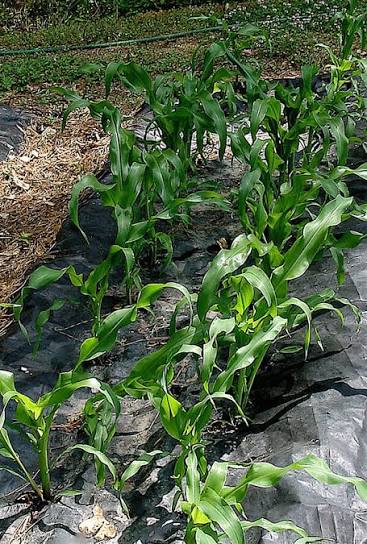Few sights are more rewarding than tall, golden stalks of corn swaying gently in your own garden. Whether you’re dreaming of fresh corn on the cob for summer barbecues or hearty corn for homemade recipes, learning how to plant corn successfully is easier than you think.With the right soil, spacing, and care, you can grow vibrant, healthy corn right in your backyard — even if you’re a beginner. In this guide, we’ll reveal simple tricks to how to plant corn successfully, ensuring strong stalks, full ears, and a delicious harvest every time.🌱 Understanding Corn BasicsBefore diving into planting, it’s important to know that corn is a warm-season crop that loves full sun, fertile soil, and plenty of moisture. It’s also wind-pollinated, which means spacing and planting in blocks — not single rows — is key to good pollination and full, even kernels.Corn generally takes 60–100 days to mature depending on the variety, so planning and timing are crucial for a successful yield.🌞 Step 1: Choose the Right VarietyWhen learning how to plant corn successfully, the first step is choosing the right type of corn for your climate and taste.Here are a few popular types to consider:🌽 Sweet Corn – The classic choice for home gardeners; perfect for grilling and eating fresh.🌾 Dent Corn (Field Corn) – Used for livestock feed or cornmeal production.🍿 Popcorn – A fun and tasty variety for family gardens.🌽 Super Sweet (sh2) Varieties – Extra sweet flavor, but needs careful pollination and isolation from other types.Tip: Check your local planting zone and pick varieties that mature within your region’s growing season.🌾 Step 2: Prepare the SoilCorn is a heavy feeder, meaning it needs nutrient-rich soil to grow strong and tall.Here’s how to prep your garden bed:Pick a sunny spot. Corn requires at least 6–8 hours of full sunlight daily.Loosen the soil to about 8–10 inches deep using a garden fork or tiller.Enrich the soil with compost or well-rotted manure before planting.Check the pH level. Corn prefers slightly acidic to neutral soil (around 6.0–6.8).Adding a balanced fertilizer (like 10-10-10 NPK) before planting gives your corn a strong start.🌽 Step 3: Planting Corn SeedsThe best time to plant corn is after the last frost, when soil temperatures reach at least 60°F (15°C).Planting Steps:Sow seeds 1½ inches deep and about 6–8 inches apart.Space rows 30–36 inches apart, but plant in blocks of at least four short rows for proper pollination.Water thoroughly after planting to encourage germination.Pro Tip: For continuous harvests, sow new seeds every 2 weeks until midsummer.💧 Step 4: Watering and FeedingCorn thrives on consistent moisture — especially during the silking and tasseling stages (when ears begin forming).Watering Tips:Provide about 1 to 1.5 inches of water per week.Water deeply at the base rather than sprinkling the leaves.Mulch around the plants to retain moisture and suppress weeds.Feeding Tips:Apply a nitrogen-rich fertilizer when plants are about 8 inches tall.Feed again when they’re knee-high (“knee-high by the Fourth of July” is a traditional benchmark).Avoid over-fertilizing, as too much nitrogen can lead to lush leaves but smaller ears.🌿 Step 5: Weed and Pest ControlWeeds compete with corn for nutrients, so keep your garden bed clear during early growth.Simple tricks to control weeds:Apply organic mulch like straw or shredded leaves.Hand-weed gently to avoid disturbing shallow roots.Use corn gluten meal as a natural pre-emergent weed suppressant.Common Corn Pests:Corn Earworms: Tiny caterpillars that feed on kernels. Use neem oil or insecticidal soap.Cutworms: Protect seedlings with collars made of cardboard or plastic.Aphids: Spray with water or a mild soap solution to remove them.🌾 Step 6: Pollination and Growth TipsSince corn is wind-pollinated, good spacing ensures even kernel development.Here’s how to boost pollination:Plant corn in blocks (4×4 or larger) rather than long single rows.When tassels appear, gently shake the stalks to help spread pollen onto the silks.Avoid planting different types of corn (like sweet and field corn) too close together — they can cross-pollinate and affect flavor.🌽 Step 7: Harvesting CornKnowing when to harvest is one of the final — and most rewarding — steps in learning how to plant corn successfully.Signs Corn is Ready:The silks turn brown and dry, usually about 20 days after they first appear.The kernels feel plump and emit a milky liquid when punctured.Ears should feel firm, with the husks still green.To harvest, firmly grasp the ear and twist downward to snap it off cleanly.🧺 Step 8: Storing and Using Fresh CornFresh corn tastes best right after harvest, but you can also preserve it easily.Refrigerate: Store ears (with husks) in the fridge for up to 3 days.Freeze: Blanch the kernels for 4 minutes, cool, dry, and freeze in airtight bags.Dry or grind: Field corn can be dried and used for cornmeal or flour.Nothing beats the sweetness of homegrown corn grilled, roasted, or tossed into summer salads!🌻 Practical Tips for Corn SuccessHere are some final simple tricks to how to plant corn successfully and get the best results:Rotate crops annually. Avoid planting corn in the same spot each year to prevent soil depletion and pest buildup.Companion planting works! Corn grows well alongside beans and squash — the traditional “Three Sisters” method.Keep an eye on spacing. Crowded plants struggle to pollinate properly and produce smaller ears.Add organic matter yearly. Compost or manure keeps soil fertile and productive.Be patient! Corn takes time, but the payoff is worth it.🌽 Conclusion: Grow Smarter, Harvest BetterWith these simple tricks to how to plant corn successfully, you’re ready to grow your own golden harvest with confidence! From choosing the right seeds to mastering pollination and harvest timing, every step brings you closer to that first bite of sweet, homegrown corn.Whether you’re gardening in the U.S., U.K., or Canada, these tips will help you grow smarter, save time, and enjoy a rewarding harvest.So grab your seeds, prepare your soil, and get planting — because nothing tastes better than fresh corn straight from your garden! 🌞🌾

